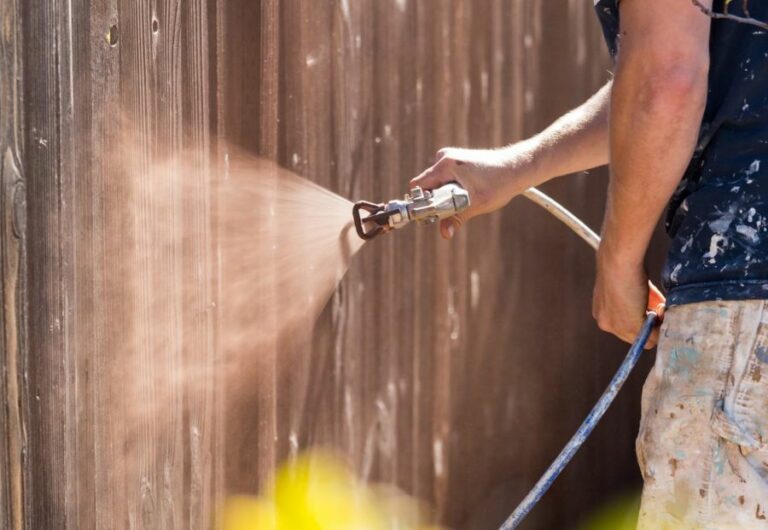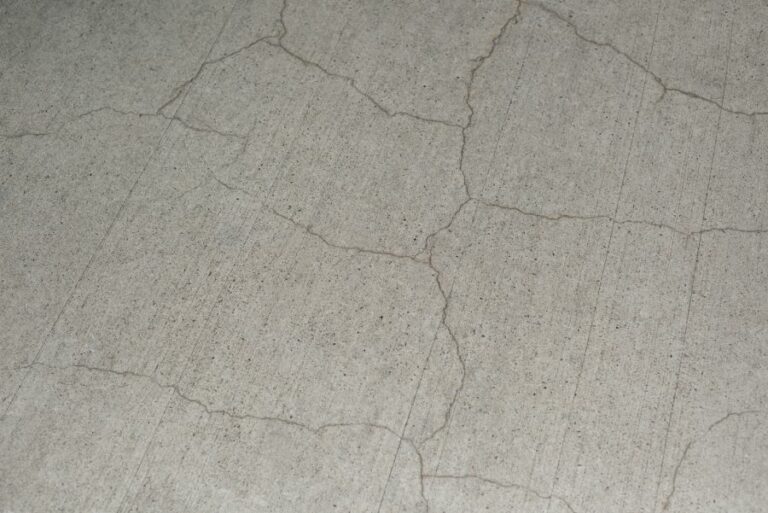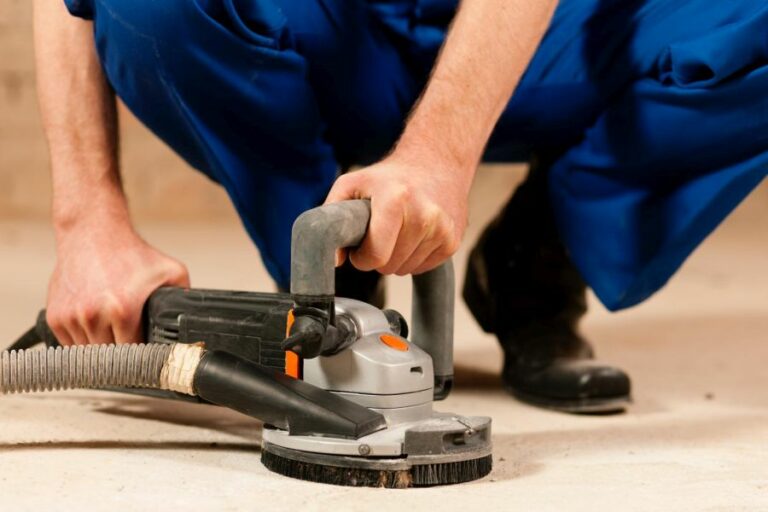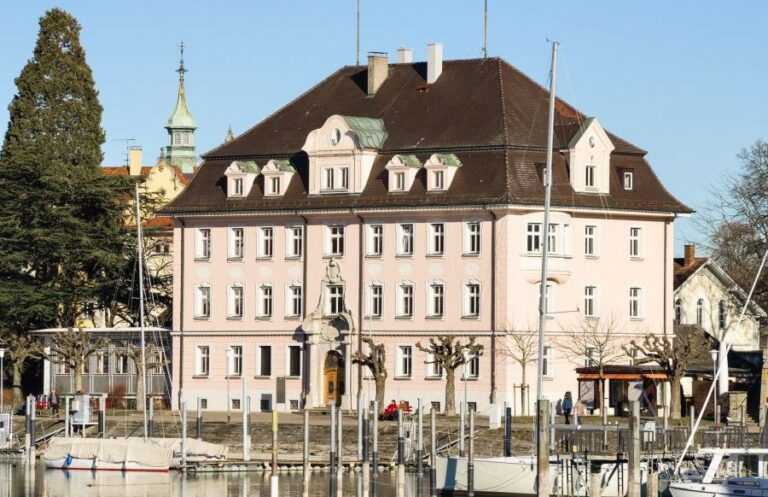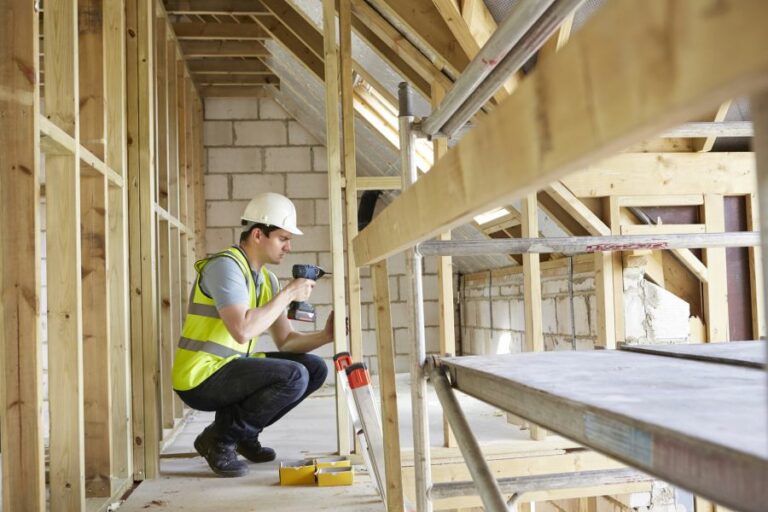Various Abrasives For Surface Prep: A Guide
As someone who understands the importance of the right surface preparation before painting, coating, or welding, you’re in the right place for a comprehensive guide on various abrasives available for surface prep. With my years of experience in the industry, I want to assure you that I can help you choose the perfect abrasive for your project, leaving you with a flawless finish and ensuring proper adhesion.
Various abrasives for surface prep:
Various abrasives for surface preparation include natural abrasives like garnet, emery, and pumice, synthetic abrasives such as aluminum oxide, silicon carbide, zirconia alumina, and ceramic alumina; and specialty abrasives like crushed glass, baking soda, steel grit, and steel shot. Choosing the right abrasive depends on factors like hardness, friability, recyclability, and environmental impact, along with the project’s specific requirements.

Discover the numerous abrasive options available for surface preparation and their varying applications in our comprehensive guide. Dive in and learn how to choose the right abrasive for your project, ensuring quality results every time. Read on to uncover these abrasive secrets!
Contents
- 1 Guide to Diverse Abrasives for Surface Preparation
- 2 Exploring the Different Kinds of Abrasives
- 3 Comprehensive Guide to Surface Prep Techniques
- 4 SA 2.5 Surface Preparation: An In-Depth Guide
- 5 Tips for Selecting the Right Abrasives
Guide to Diverse Abrasives for Surface Preparation
Surface preparation is an essential step in various projects, from painting and coating to removing rust and other contaminants. The right abrasive can make a significant difference in the quality and efficiency of the process.
• Natural Abrasives
Natural abrasives have been used for centuries in different surface prep applications. They are often categorized by their mineral composition and hardness.
– Garnet
Garnet, a natural silicate mineral, is an excellent abrasive for surface prep, particularly in sandblasting and waterjet cutting applications. Its high hardness and sharp fracture ensure a clean, fast cut in various substrates.
Additionally, garnet’s eco-friendly nature and recyclability make it a reliable option for many industries.
– Emery
Emery is a naturally occurring abrasive consisting of impure corundum mixed with magnetite, hematite, or other iron oxides. Known for its durability and hardness, emery is ideally suited for heavy-duty applications such as grinding, polishing, or cutting hard materials.
– Pumice
Pumice is a volcanic rock known for its low density and high porosity. These attributes make it a gentle abrasive suitable for light surface conditioning in applications such as cleaning, polishing, or finishing soft materials like wood, glass, or softer metals.
• Synthetic Abrasives
Synthetic abrasives are manufactured abrasives designed to address various surface prep needs across industries. They are generally categorized by their material composition and grain structure.
– Aluminum Oxide
Aluminum oxide is a widely used synthetic abrasive, offering a high cutting rate and durability. It is suitable for various applications, from grinding to polishing, and can be used on surfaces such as metals, glass, or ceramics.
Aluminum oxide is available in several forms, including white, brown, and pink aluminum oxide, each featuring different levels of hardness and friability.
– Silicon Carbide
Silicon carbide is another popular synthetic abrasive material known for its hardness and sharp cutting edges. It is well-suited for grinding, cutting, and finishing operations on hard or brittle materials such as carbides, ceramics, or glass.
Silicon carbide can also be used for cleaning and smoothing the surface of softer materials like aluminum and brass.
– Zirconia Alumina
Zirconia alumina is a high-performance abrasive known for its self-sharpening properties, high cut-rate, and extended life. It is ideal for aggressive grinding and finishing applications on steel, stainless steel, and other heavy-duty substrates.
Zirconia alumina is often used in coated and bonded abrasive products like belts, discs, and wheels.
– Ceramic Alumina
Ceramic alumina is a high-performance synthetic abrasive well-suited for demanding surface preparation tasks. It offers a consistent, rapid cut rate on hard-to-grind materials such as stainless steel, titanium, or nickel alloys.
Ceramic alumina is commonly used in grinding wheels, discs, and belts for industrial applications.
• Specialty Abrasives
Various specialty abrasives have been developed to cater to niche requirements in specific industries or applications.
– Crushed Glass
Crushed glass is a recycled abrasive commonly used for blast cleaning applications. It offers a gentle yet effective cleaning solution for delicate surfaces like wood, plastic, or aluminum. Crushed glass is an eco-friendly option, as it reduces landfill waste while providing effective surface prep results.
– Baking Soda
Baking soda (sodium bicarbonate) is a mild abrasive ideal for gentle surface cleaning, paint removal, or rust removal without causing damage to the substrate.
Baking soda blasting is particularly effective in sensitive applications like automotive or aerospace parts, where minimal material removal and high-precision cleaning are critical.
– Steel Grit and Steel Shot
Steel grit and steel shot are less frequently used abrasives, ideal for aggressive blast cleaning of metal surfaces, including removing rust, scale, and paint.
Both abrasives are manufactured by crushing steel into irregular particles (grit) or spherical shapes (shot). Steel grit is effective for deep cleaning, while steel shot provides a smoother finish.
• Final Thoughts
Choosing an appropriate abrasive for your surface prep application is crucial to ensuring efficiency, quality, and consistency in your project.
Understanding the difference between natural, synthetic, and specialty abrasives will help you select the right product that caters to your specific requirements.
Consider the hardness, friability, recyclability, and environmental impact of each abrasive, as well as project-specific constraints and goals, before making your decision.
Exploring the Different Kinds of Abrasives
Abrasives are materials that are used to wear down, clean, or polish surfaces. They can be made from natural or synthetic materials and come in various shapes, sizes, and hardness levels.
• Natural Abrasives
Natural abrasives are derived from minerals and other organic sources. They have been used for centuries for various purposes, from grinding and polishing to cleaning and sharpening. Some common natural abrasives include:
– Garnet
Garnet is a group of silicate minerals that are commonly used as an abrasive due to their hardness and durability. They are often found in sandpapers and abrasive blasting applications. As a natural abrasive, garnet is eco-friendly and poses minimal health risks.
– Diamond
Diamond is the hardest known natural abrasive and is used for cutting, grinding, and polishing extremely hard materials such as gemstones, metals, and ceramics. While diamond abrasives are expensive, their durability makes them cost-effective in certain applications.
– Emery
Emery is a naturally occurring mineral composed of aluminum oxide and iron oxide. This abrasive is popular for hand polishing metals and other materials due to its desirable combination of hardness and durability.
Emery cloth and emery boards are commonly used for polishing metals and smoothing surfaces.
– Pumice
Pumice is a light, porous volcanic rock that has been used as an abrasive since ancient times. It can be used to clean and polish surfaces and is commonly found in household cleaning products, personal care items, and dental applications.
• Synthetic Abrasives
Synthetic abrasives are man-made materials that have been engineered to offer specific characteristics such as hardness, shape, and consistency. Some of the most widely used synthetic abrasives include:
– Aluminum Oxide
Aluminum oxide, also known as corundum or fused alumina, is a commonly used synthetic abrasive. It is known for its hardness and versatility, making it suitable for a wide range of applications, including grinding, cutting, and polishing metals, ceramics, and plastics.
– Silicon Carbide
Silicon carbide is a hard, sharp, chemically inert abrasive ideal for grinding and polishing hard materials such as metals, ceramics, and glass. It is also commonly used for cutting and grinding silicon wafers in the semiconductor industry.
– Cubic Boron Nitride (CBN)
Cubic boron nitride (CBN) is second only to diamond in terms of hardness, making it an ideal abrasive for grinding and cutting hard materials. CBN is often preferred over diamond abrasives for processing ferrous metals, as it doesn’t react with iron.
– Ceramic Abrasives
Ceramic abrasives are a relatively new category of synthetic abrasives that are engineered to offer specific characteristics, such as self-sharpening grains and uniform surface finishes.
Common applications for ceramic abrasives include grinding, cutting, and polishing hard materials such as metals and ceramics.
• Coated and Bonded Abrasives
Abrasives can be categorized based on how they are used: coated or bonded. Each type has its own unique set of features and applications.
– Coated Abrasives
Coated abrasives consist of abrasive particles bonded to a flexible backing, such as paper, cloth, or polymer film. Examples of coated abrasives include sandpaper, abrasive belts, and abrasive discs. Coated abrasives are widely used for sanding, polishing, and finishing applications on a variety of materials.
– Bonded Abrasives
Bonded abrasives consist of abrasive particles bonded together with a resin or other binding agent to form a solid, rigid structure. Examples of bonded abrasives include grinding wheels, cutting wheels, and mounted points. Bonded abrasives are typically used for cutting, grinding, and shaping applications.
• Recommendations and Best Practices
When choosing and using abrasives, it’s important to consider the following factors to ensure optimal performance and safety:
- Select the appropriate abrasive type and material based on the specific application and the material being processed.
- Use the correct abrasive product, such as choosing the right grit size, backing material, and bonding agent.
- Consider the abrasive’s hardness, durability, and performance characteristics.
- Always follow safety guidelines and wear appropriate personal protective equipment when using abrasives.
By understanding the various types of abrasives and their applications, you can select the right abrasive for the task at hand, ensuring consistent and high-quality results. Remember to follow established best practices in abrasive usage to ensure a safe and efficient workflow.
Type | Description |
|---|---|
Coated Abrasives | Abrasives that are bonded to a flexible backing material, such as cloth or paper. Commonly used in sheets, belts, and discs for sanding, grinding, and polishing applications. |
Bonded Abrasives | Abrasives that are held together by a bonding material, typically in the form of grinding wheels, cutting wheels, or mounted points. Used for grinding, cutting, and finishing operations on various materials. |
Superabrasives | High-performance abrasives made from synthetic diamond or cubic boron nitride (CBN) crystals. Used for grinding, cutting, and polishing extremely hard materials like ceramics, tungsten carbide, and hardened steel. |
Loose Abrasives | Abrasives that are not bonded to a backing or substrate, often in the form of powders, grains, or pastes. Used for applications like lapping, polishing, and blast cleaning. |
Non-Woven Abrasives | Abrasives that are embedded in a non-woven material, typically in the form of pads, wheels, or belts. Used for applications like surface preparation, deburring, and cleaning. |
Comprehensive Guide to Surface Prep Techniques
Surface preparation is a critical step in various industries, especially when it comes to painting, coating, adhesion and bonding, and cleaning. Proper surface preparation can ensure that materials and products achieve their desired lifespan, performance, and aesthetics.
• Abrasive Blasting
Abrasive blasting is a technique that involves projecting a high-velocity stream of abrasive materials onto a surface. This method effectively removes contaminants, such as rust, old coatings, and mill scale, and creates a rough texture ideal for bonding and paint adhesion. Some common abrasive blasting techniques include:
- Sandblasting: employs the use of high-pressure air to propel sand particles onto the surface.
- Bead blasting: uses glass beads as the abrasive medium for a smoother finish compared to sandblasting.
- Grit blasting: utilizes various abrasives, such as aluminum oxide or steel grit, to achieve desired surface cleanliness and roughness profiles.
I recommend using abrasive blasting for metal surfaces that require fast and effective removal of contaminants and to achieve appropriate adhesion profiles for subsequent painting or coating operations.
• Chemical Cleaning
Chemical cleaning utilizes solvents, acids, or alkaline solutions to remove contaminants and surface films from various substrates. Some common chemical cleaning methods include:
- Degreasing: dissolves and removes oil, grease, and wax from surfaces using solvents or emulsifying cleaner solutions.
- Acid cleaning (pickling): employs acid solutions to remove rust, mill scale, and other inorganic contaminants from metal surfaces.
- Alkaline cleaning: utilizes alkaline solutions to remove organic and inorganic contaminants, such as dirt, oil, and grease, from surfaces.
I recommend using chemical cleaning methods when dealing with sensitive substrates or applications, as they can be less aggressive than mechanical methods. Keep in mind that proper disposal and handling of chemicals are crucial to ensure environmental and worker safety.
• High-Pressure Water Jetting
High-pressure water jetting (also known as hydro blasting or water blasting) is a technique that uses highly pressurized water to remove contaminants, coatings, and residues from surfaces. This method is highly effective, environmentally friendly, and versatile to suit various applications, such as:
- Surface cleaning: employs water pressures up to 5,000 psi to remove dirt, mold, and other contaminants from surfaces.
- Paint and coating removal: uses water pressures between 10,000 and 20,000 psi to strip off paint, coatings, and rust from surfaces efficiently.
- Concrete and surface preparation: utilizes ultra-high water pressures, typically above 30,000 psi, to remove concrete, asphalt, and other tough materials from surfaces alongside surface profiling for improved adhesion.
High-pressure water jetting is an excellent option for delicate substrates or environmentally conscious operations, as it avoids the use of abrasive materials or chemicals.
• Grinding and Polishing
Grinding and polishing encompass a range of techniques that involve the use of abrasive tools to smoothen, flatten, or improve the surface quality of various materials. Some common grinding and polishing methods include:
- Manual grinding: uses handheld tools, such as sandpaper or grinding pads, to remove contaminants, paint, or coatings from the surface.
- Power tools: employs electric or pneumatic tools, such as angle grinders or rotary sanders, to grind or polish surfaces with greater speed and efficiency.
- Shot peening: blasts small steel, ceramic, or glass spheres (shot) at the surface to induce compressive stress, resulting in an improved surface finish and enhanced material properties.
I recommend using grinding and polishing techniques for localized surface preparation, removing thin coatings, and when a highly polished or smooth finish is required for specific applications.
• Surface Tolerant Coatings
In some situations, comprehensive surface preparation may not be feasible, such as in offshore or marine environments, or when removing the existing coating could compromise the structure. In such cases, surface-tolerant coatings can be applied to promote adhesion and ensure long-lasting protection.
These coatings have been formulated to bond with minimally prepared surfaces and can provide corrosion protection, even under compromised circumstances.
I recommend using surface tolerant coatings when traditional surface preparation methods are not feasible or as a temporary measure to provide protection until proper surface preparation can be performed.
• Conclusion
Different types of surface preparation techniques serve unique purposes and should be tailored according to the material, desired finish, and specific application requirements.
While abrasive blasting, chemical cleaning, high-pressure water jetting, and grinding and polishing techniques are highly effective, surface-tolerant coatings can provide an alternative solution when traditional methods are not feasible.
Always ensure that all surface preparation methods are executed following industry standards and safety guidelines to achieve the best results and guarantee worker and environmental safety.
SA 2.5 Surface Preparation: An In-Depth Guide
Surface preparation is a crucial step in many industries, including painting, coating, and welding. One of the most common and widely accepted surface preparations is the Swedish Standard SA 2.5, or “Near White Metal Blasting.”
• What is SA 2.5 Surface Preparation?
SA 2.5 surface preparation, as mentioned above, is a Swedish standard for “Near White Metal Blasting.” It provides guidelines for removing contamination, rust, and mill scale from the surface of steel or other metals using abrasive blasting techniques.
The Swedish Standards Institute (SIS) published the original document, which has been adopted internationally with slight variations in different countries.
This surface preparation standard is widely used in maritime, oil and gas, petrochemical, and various other industries that require durable, corrosion-resistant coatings. SA 2.5 is considered the benchmark for achieving optimal adhesion and long-lasting protection for painted or coated metal surfaces.
• Importance of Surface Preparation in Coating and Painting
Achieving a high-quality, long-lasting finish on metal surfaces depends significantly on proper surface preparation. Paints, coatings, and welding processes all require a clean, smooth surface free of contaminants, such as rust, mill scale, dirt, and grease.
These contaminants can interfere with the adhesion of the paint or coating, leading to premature failure, poor performance, and overall poor aesthetics.
Proper surface preparation, according to SA 2.5 standards, ensures that the metal is well-equipped to receive the subsequent protective layers, be it paint, coating, or weld. Implementing this process helps in achieving an exceptionally durable finish and extending the life of the metal structure or component.
• Abrasive Blasting Techniques for SA 2.5 Surface Preparation
There are several abrasive blasting techniques used to achieve SA 2.5 surface preparation, including dry blasting, wet blasting, and vacuum blasting. The choice of blasting method depends on factors such as accessibility, environmental regulations, and specific project requirements.
– Dry Blasting
The most common method for achieving SA 2.5 surface preparation is dry abrasive blasting. This process involves using high-velocity compressed air to propel abrasive media, such as sand, steel grit, or walnut shells, against the metal surface.
The impact of the abrasive particles removes contaminants, rust, and mill scale, leaving a clean, near-white metal finish.
It is essential to select appropriate abrasive media for the particular project, considering factors such as hardness, particle size, and shape.
Properly trained and skilled operators are needed to achieve consistent results for SA 2.5 surface preparation using dry blasting techniques. Proper personal protective equipment (PPE) must also be used while carrying out this process.
– Wet Blasting
Wet abrasive blasting, also known as vapor blasting or slurry blasting, involves injecting water into the abrasive stream for effective contaminant removal. This method is more environmentally friendly than traditional dry blasting, as it generates less dust and airborne particulates, reducing air pollution.
Wet blasting is ideal for achieving SA 2.5 surface preparation on sensitive or complex surfaces, where dry blasting could damage the material. Additionally, the introduction of water helps in the suppression of heat generated during the blasting process, preventing warping or distortion of the workpiece.
– Vacuum Blasting
Vacuum blasting, or dustless blasting, is a closed-loop abrasive blasting method that combines dry or wet blasting techniques with a vacuum system for collecting spent abrasives and contaminants.
This method minimizes dust emissions, making it suitable for indoor applications or other scenarios where dust suppression is of high importance.
Achieving the SA 2.5 surface preparation standard may take longer with vacuum blasting techniques due to their lower abrasive velocity. However, the trade-off is a cleaner working environment and a reduced impact on surrounding areas.
• Quality Control and Inspection for SA 2.5 Surface Preparation
Ensuring that a metal surface meets the SA 2.5 standard requires proper quality control and inspection measures. Visual inspection using proper lighting is the primary method for assessing the surface quality, comparing the resulting finish against standard reference photographs provided by industry standards.
Besides visual inspection, other testing methods that can be employed to ensure compliance with the SA 2.5 standard include surface profile measurements, recording ambient conditions such as temperature and humidity during the blasting process, and testing for soluble salts and other contaminants on the cleaned surface.
• Conclusion
In conclusion, SA 2.5 surface preparation is a widely accepted standard for achieving near-white metal blasting on steel and other metal surfaces. Compliance with this standard ensures optimal coating adhesion, improved aesthetics, and extended service life for the protected structures or components.
Proper selection of abrasive media, skilled operators, and stringent quality control measures must be in place to achieve success with SA 2.5 surface preparation.
Tips for Selecting the Right Abrasives
Abrasives are essential materials used in various industries, including woodworking, metalworking, and automotive repairs. They play a crucial role in shaping, smoothing, and polishing surfaces by removing unwanted materials.
But with so many different types of abrasives available on the market, how do you know which one is the ideal choice for your project? The following guide will help you understand the factors to consider when choosing abrasives and make the best decision for your requirements.
• Understanding the Types of Abrasives
Before you can choose the right abrasive, it’s important to understand the different categories of abrasives available. There are two primary types of abrasives: bonded and coated.
– Bonded Abrasives
Bonded abrasives are formed by a combination of abrasive grains and a bonding matrix. They are typically used in grinding wheels, cutting wheels, and mounted points. Some common examples of bonded abrasives are aluminum oxide, silicon carbide, and diamond.
– Coated Abrasives
Coated abrasives consist of a backing material, usually cloth, paper, or film, and an adhesive that holds the abrasive grains onto the backing. These are often used in the form of sheets, belts, and discs. Common examples include sandpaper, emery cloth, and abrasive belts.
• Assessing Material Hardness
The hardness of the material being worked on plays a vital role in determining the most suitable abrasive. The hardness can range from soft materials, like wood and rubber, to harder materials, like metal and stone.
To effectively remove material, the abrasive must be harder than the material it is intended to work on.
A common scale for measuring the hardness of materials is the Mohs hardness scale. Abrasives like aluminum oxide and silicon carbide are suitable for hard materials, while softer abrasives like garnet and emery are suitable for softer materials.
• Determining the Grit Size
Grit size refers to the size of the abrasive grains and affects the degree of material removal and the resulting surface finish. Abrasives are available in a wide range of grit sizes, which are usually measured using a mesh screen that captures a specific number of abrasive grains per inch.
- Coarse grit: This ranges from 12 to 80 grit and is ideal for aggressive material removals, such as shaping or removing heavy surfaces or deep scratches.
- Medium grit: Ranging from 100 to 220 grit, medium grit abrasives are suitable for moderate material removal and surface preparation.
- Fine grit: Consisting of 240 to 600 grit, a fine-grit abrasive is ideal for finishing work that requires smooth surfaces, like polishing or removing light scratches.
- Extra fine grit: Ranging from 800 to 2000 grit and beyond, extra fine grit abrasives are used for very fine finishing work, such as polishing transparent or high-gloss surfaces.
• Evaluating the Backing Material
As mentioned earlier, coated abrasives use a backing material to support the abrasives. The choice of backing material is crucial, as it impacts the flexibility, durability, and cutting ability of the abrasive. Common backing materials include:
- Paper: Paper backings are lightweight and flexible, suitable for applications where precision is required, such as woodworking, automotive finishing, or metal polishing.
- Cloth: Cloth backings are more durable and flexible than paper, making them ideal for use on belts or in heavy-duty applications, such as metal fabrication, welding, or woodworking.
- Film: Film backings offer a consistent and uniform surface, which results in a more consistent finish. They are often used for very fine finishing applications or when precision is paramount.
• Considering the Application
Finally, the intended application for the abrasive must be considered. Some common applications include:
- Cutting: Abrasive wheels with high-speed cutting capabilities are typically used for cutting metal, stone, or tile.
- Grinding: Bonded abrasives can be used for removing heavy material, such as removing welds, rust, or excess material.
- Sanding: Coated abrasives in the form of belts, sheets, or discs are used for smoothing and finishing surfaces, such as wood or metal.
- Polishing: Fine and extra fine grit abrasives that provide a high-quality surface finish and are often used in automotive, metalworking, or woodworking applications.
By considering the type of abrasive, material hardness, grit size, backing material, and intended application, you can choose the right abrasive for your project.
Remember to always follow safety guidelines and wear appropriate protective equipment when working with abrasives.

